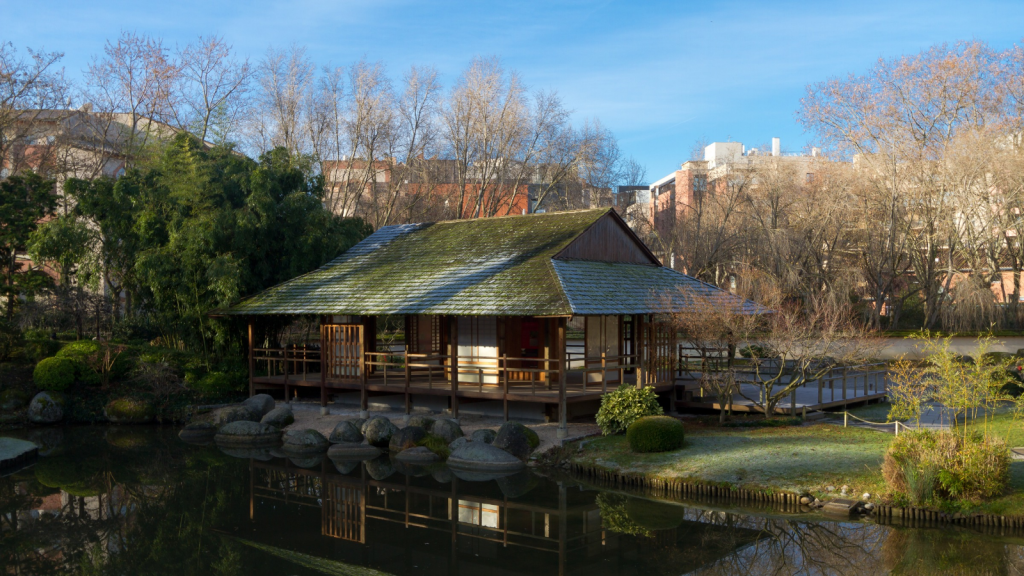Traditional Japanese gardens are some of the most peaceful places I’ve ever experienced. On the surface, they seem simple and serene, but once you start paying attention, you realise there’s so much more going on. Every rock, tree, and stream is part of a mini landscape designed with precision. The gardens are full of hidden meanings and symbolism, all aimed at creating balance and harmony. What I love most is that many of these features are so subtle, you might miss them on a casual stroll. But once you know what to look for, the whole garden comes to life in a new way. Let me show you some of these hidden gems that make traditional Japanese gardens so enchanting.
1. Asymmetry for Natural Balance
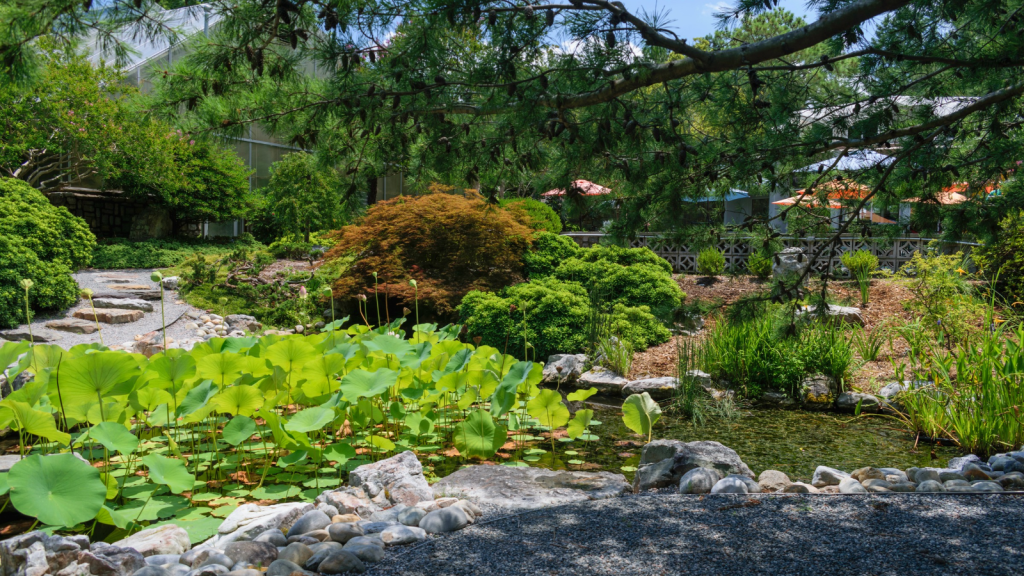
While symmetry is common in Western gardens, Japanese gardens often embrace asymmetry. This design choice reflects the belief that nature is imperfect and ever-changing. Rocks and trees are arranged to create an organic feel, as if untouched by human hands, despite the careful planning behind every element.
2. Symbolic Use of Rocks
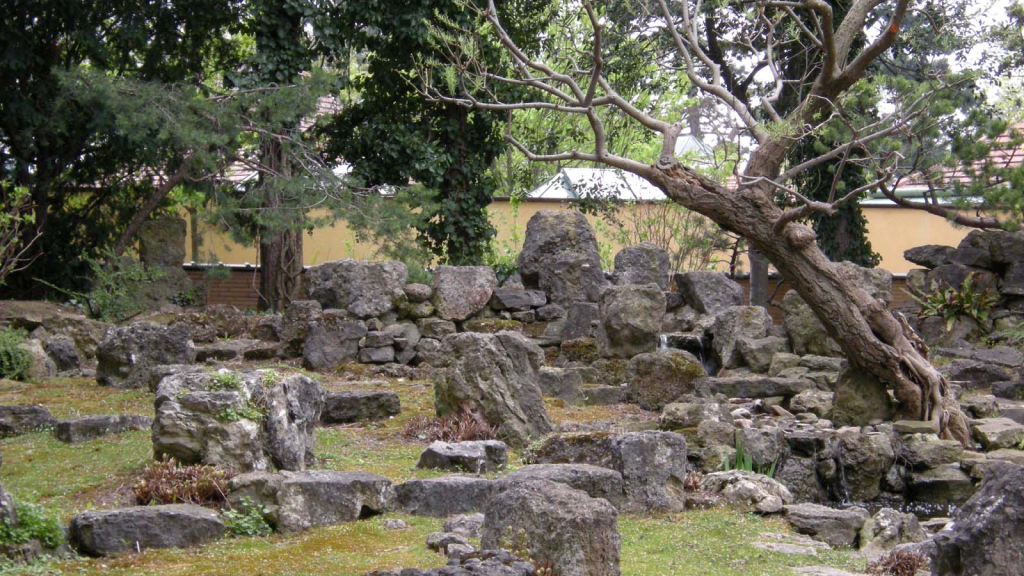
Rocks in Japanese gardens are more than just decoration. They represent mountains or islands and are carefully placed to symbolise strength, endurance, or permanence. Some stones are even selected based on their specific shapes and textures, to reflect different natural features.
3. Water as a Symbol of Life
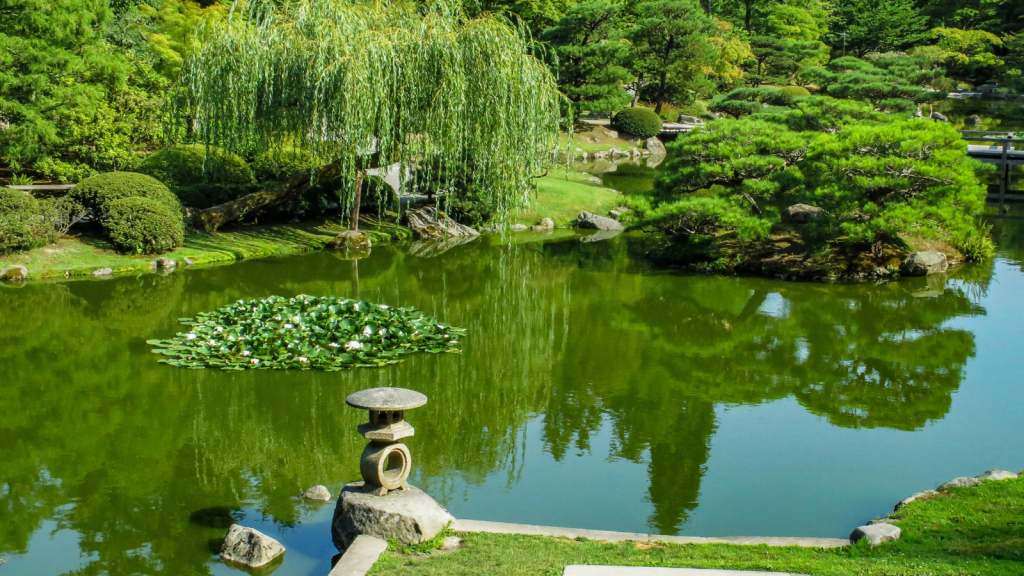
Water features like ponds, streams, and waterfalls are central to many Japanese gardens. Beyond their beauty, they symbolise the flow of life and time. In some gardens, if water is absent, sand or gravel is used to symbolise rivers or oceans, maintaining the natural imagery.
4. Shakkei: Borrowed Scenery
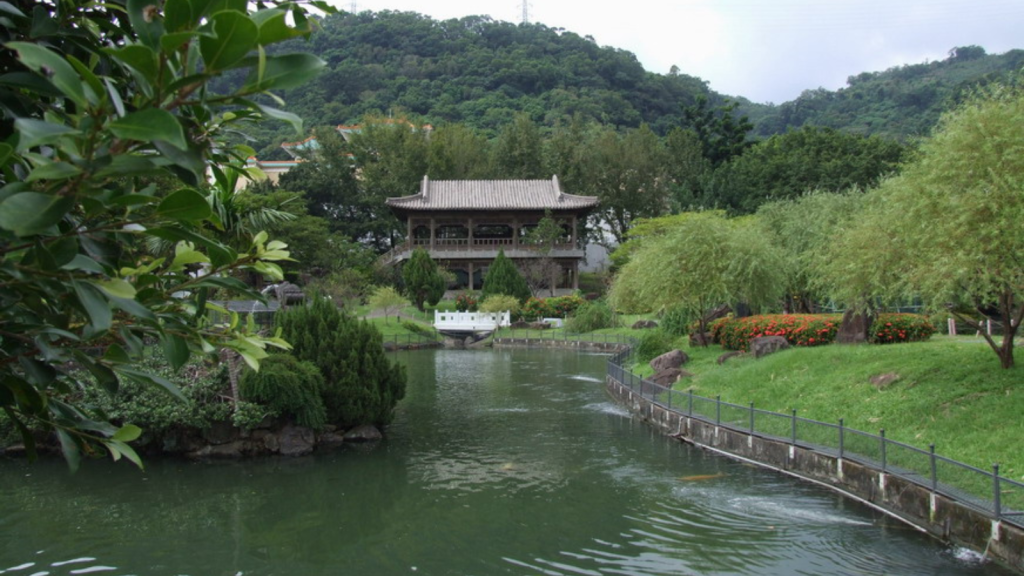
Japanese gardens often incorporate a concept called shakkei, or “borrowed scenery.” This means the garden is designed to blend with the surrounding landscape, such as mountains or trees outside its borders. The garden then feels larger and more connected to nature, even though the external scenery isn’t part of the actual garden.
5. Hidden Pathways
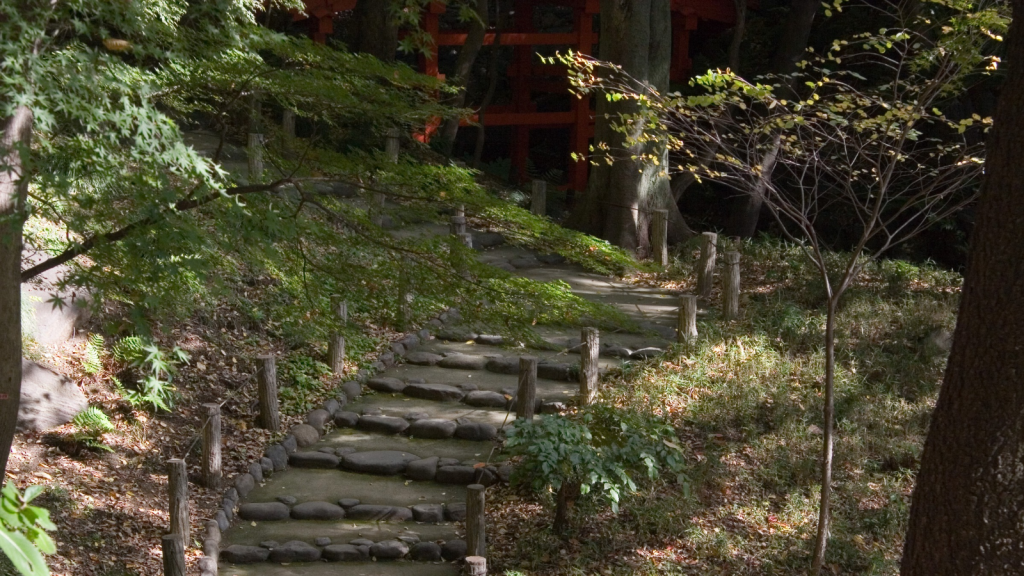
Many Japanese gardens include winding, hidden pathways that aren’t immediately visible. These are designed to encourage slow, contemplative walking, revealing different views and features of the garden as you progress. It adds an element of surprise and reflection to the experience.
6. Tsuridōrō Lanterns for Soft Light
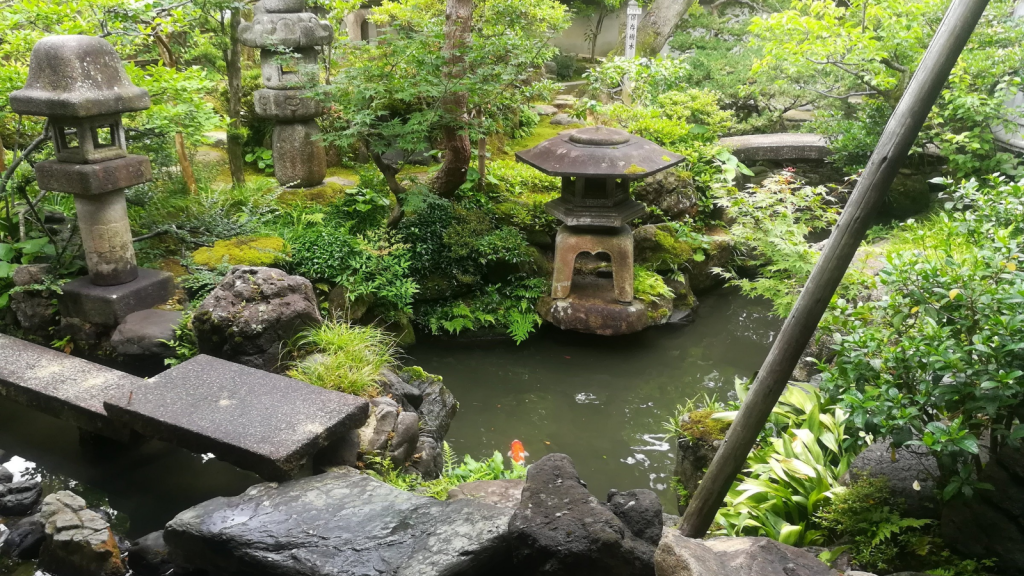
The stone lanterns (tsuridōrō) scattered around Japanese gardens were traditionally used to light paths at night. They are often half-hidden among plants or rocks, blending into the landscape while casting soft, flickering light, which adds to the serene atmosphere.
7. Controlled Perspective
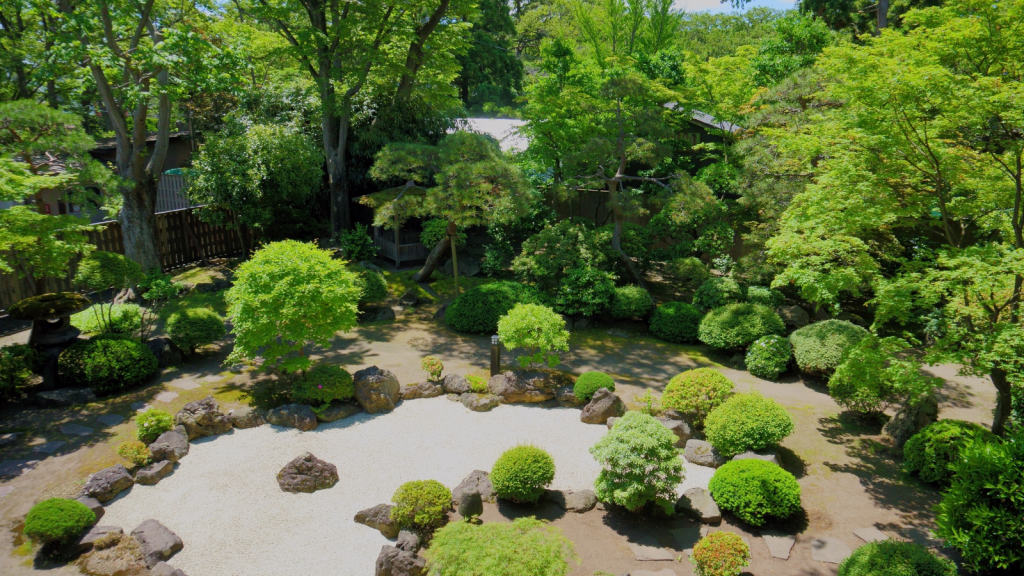
The layout of Japanese gardens often plays with perspective to create the illusion of a larger space. By strategically placing elements like trees, rocks, and water at different distances, the garden appears more expansive than it really is, offering a sense of tranquility and escape.
8. Koi Fish as Symbols of Luck and Perseverance

Koi fish are a common sight in many Japanese garden ponds, but their significance goes beyond their striking colours. They symbolise perseverance, as they swim upstream, and are also seen as a sign of good fortune. The presence of koi brings life and movement to the garden.
9. Moss Gardens as a Symbol of Age
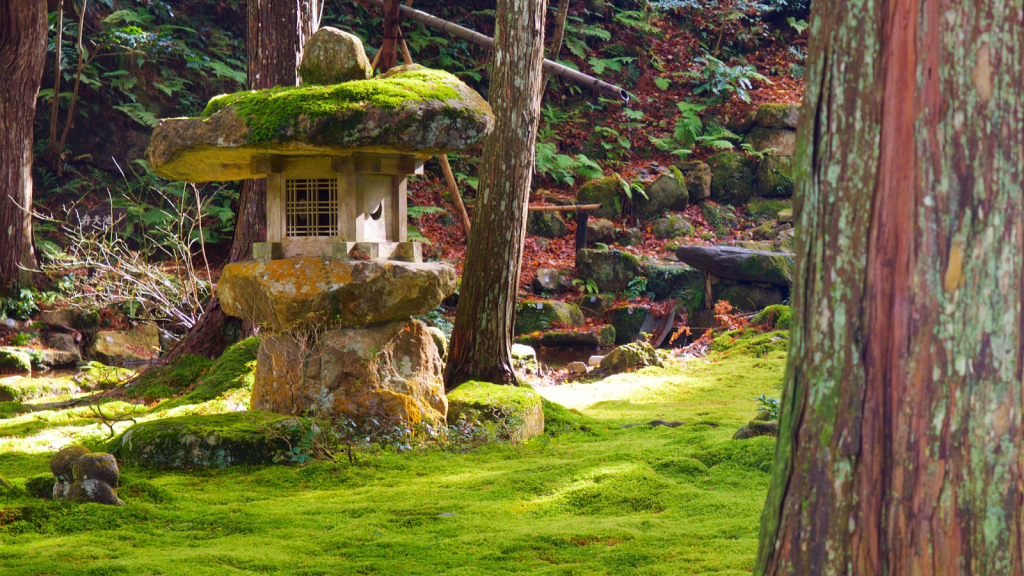
Moss is often used in Japanese gardens to create a sense of age and timelessness. It grows in the shadier parts of the garden and lends a soft, green carpet-like texture. In some gardens, moss is carefully cultivated to thrive, showing how nature can flourish with time.
10. Bamboo Fences as a Symbol of Simplicity
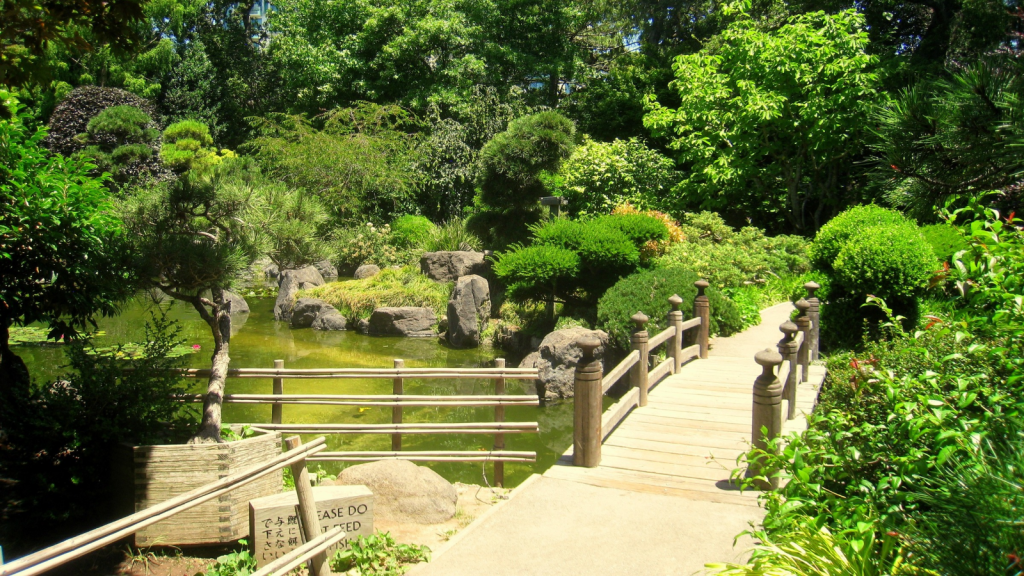
Bamboo fences are often used in Japanese gardens to provide boundaries or privacy. Their simple and natural look symbolises humility and the beauty of minimalism. The use of bamboo also reflects the value of sustainable, renewable materials in traditional Japanese design.
11. Stepping Stones for a Meditative Journey
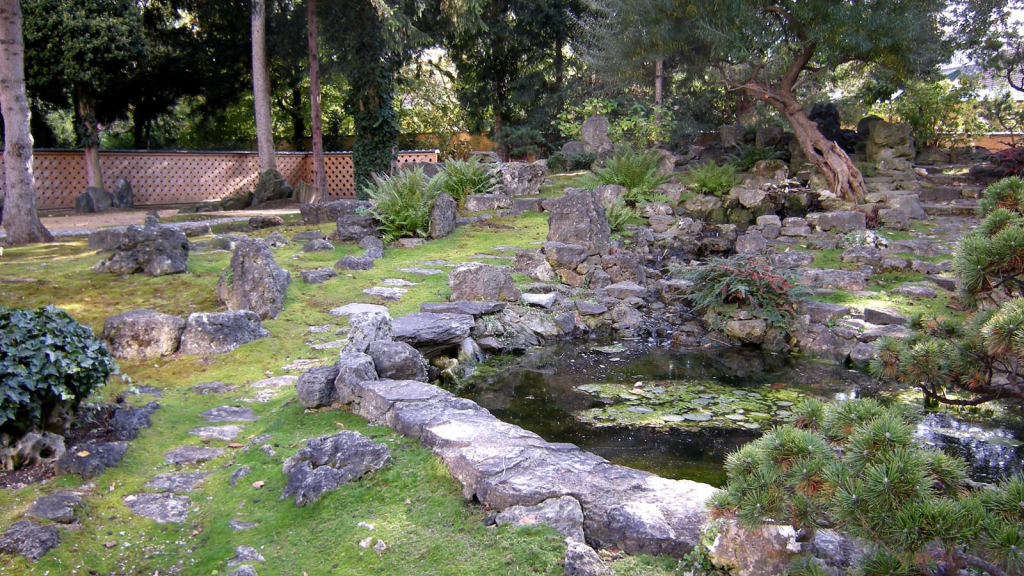
In many Japanese gardens, stepping stones are placed across paths or streams. These stones guide visitors to walk slowly and mindfully, encouraging a meditative journey. Each step is intentional, reflecting the idea that life itself is a path to be taken one step at a time.
12. Raked Gravel Patterns in Zen Gardens
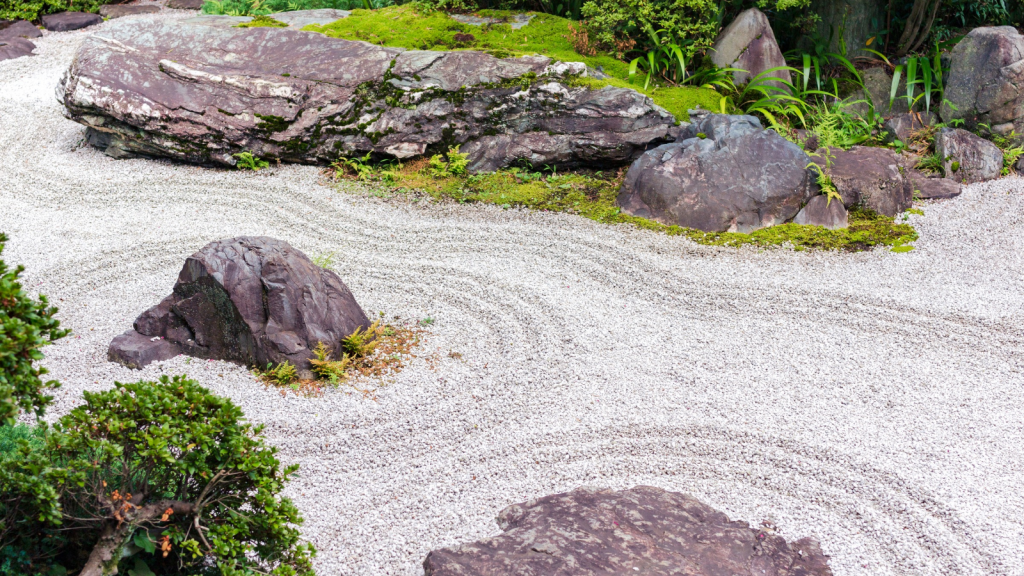
The raked gravel in Zen gardens, known as karesansui, represents water in a highly stylised way. The patterns, often waves or ripples, are meant to symbolise the flow of rivers or oceans. These designs are also meant to focus the mind, encouraging meditation through the act of raking.
13. Hidden Teahouses
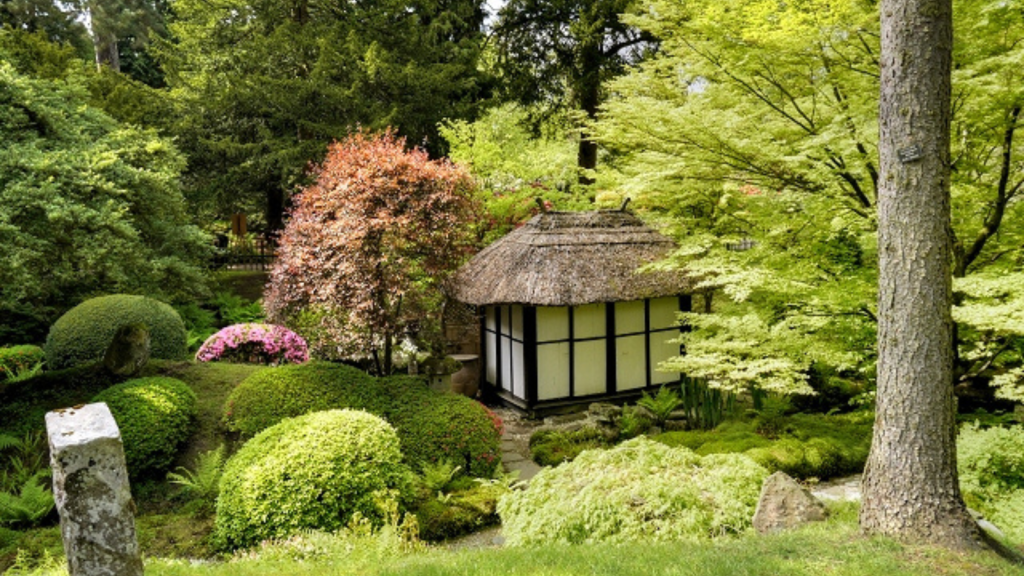
Many traditional Japanese gardens feature a hidden teahouse where guests can enjoy the chanoyu tea ceremony. These structures are often tucked away in quiet corners, creating a space of solitude and reflection. The journey to the teahouse is as important as the tea itself, symbolising mindfulness and the value of taking time to appreciate small moments.
14. The Role of Empty Space
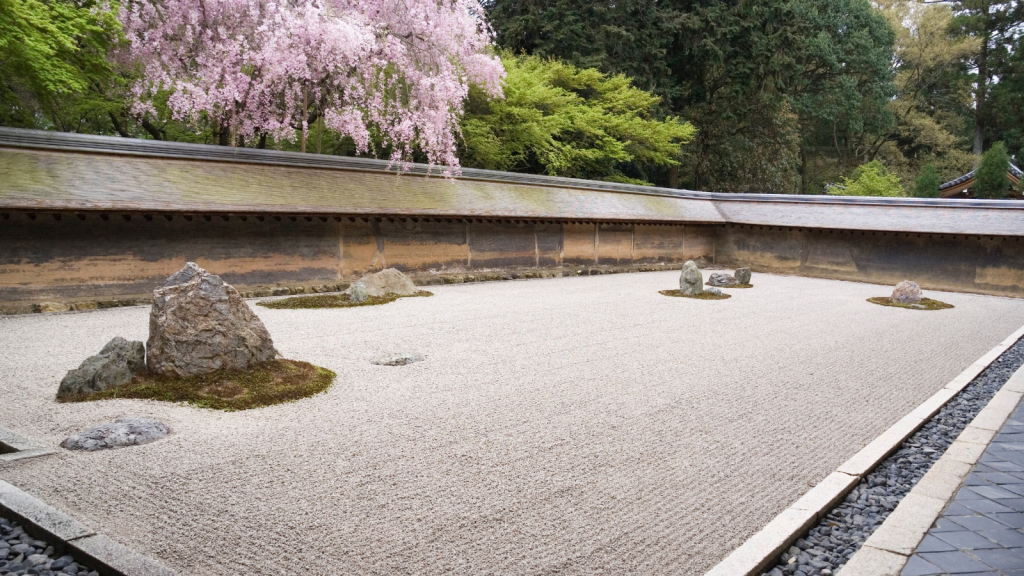
In Japanese garden design, empty space (ma) is just as important as what’s filled. These empty areas create a sense of openness and allow the mind to rest, encouraging a feeling of calm. They also highlight the elements that are present, making them more meaningful.
15. Seasonal Changes as Part of the Design
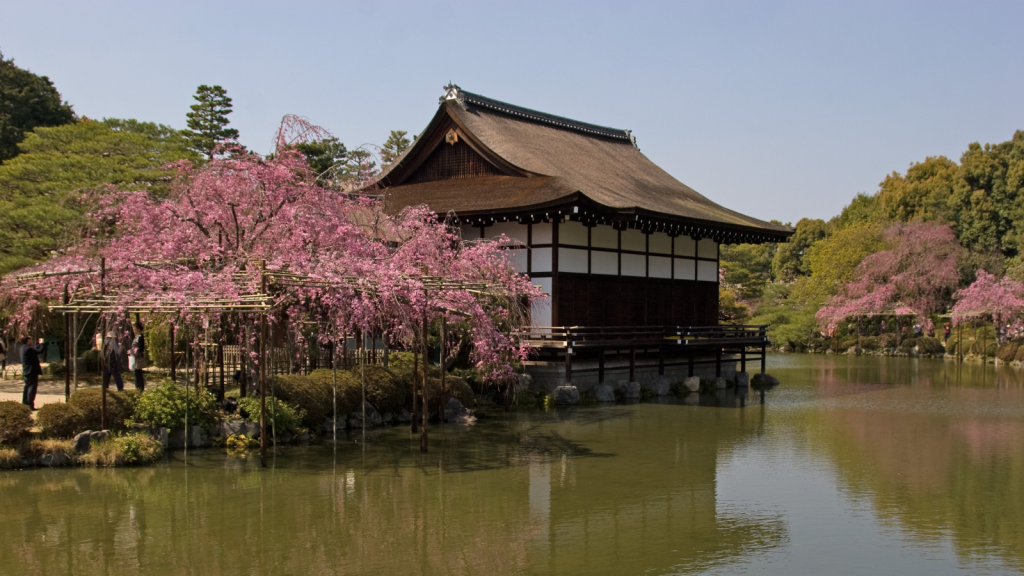
Japanese gardens are designed to change with the seasons, offering different experiences throughout the year. In the spring, cherry blossoms bloom, while in the autumn, maple leaves turn red. This constant transformation symbolises the cycles of life, death, and renewal.
16. The Importance of Shadows
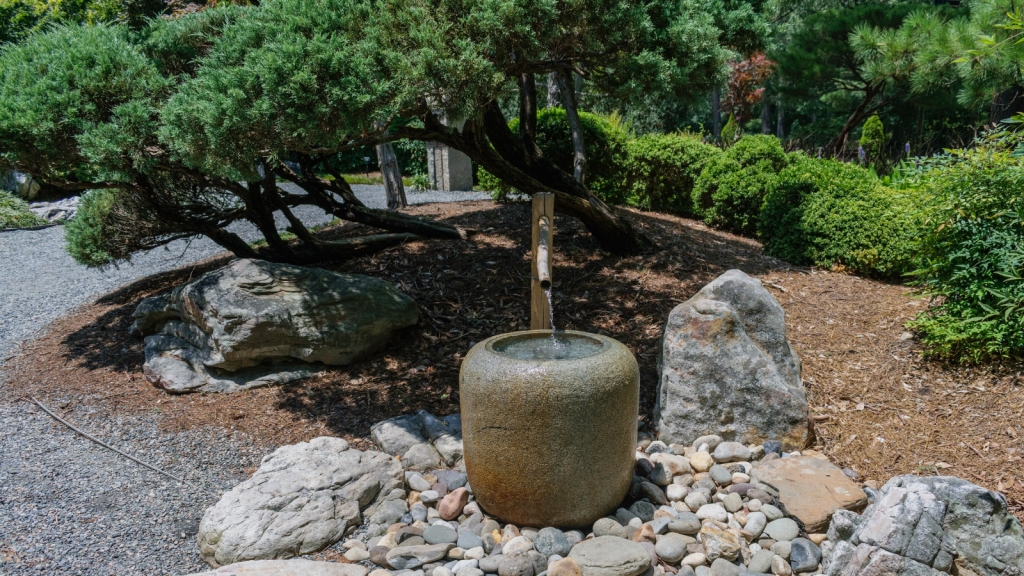
Light and shadow play a crucial role in Japanese garden design. Rather than relying on artificial lights, the gardens are often designed to take advantage of natural shadows, which shift throughout the day. This adds a dynamic quality, with different features coming to life as the sun moves.
17. Hidden Water Basins
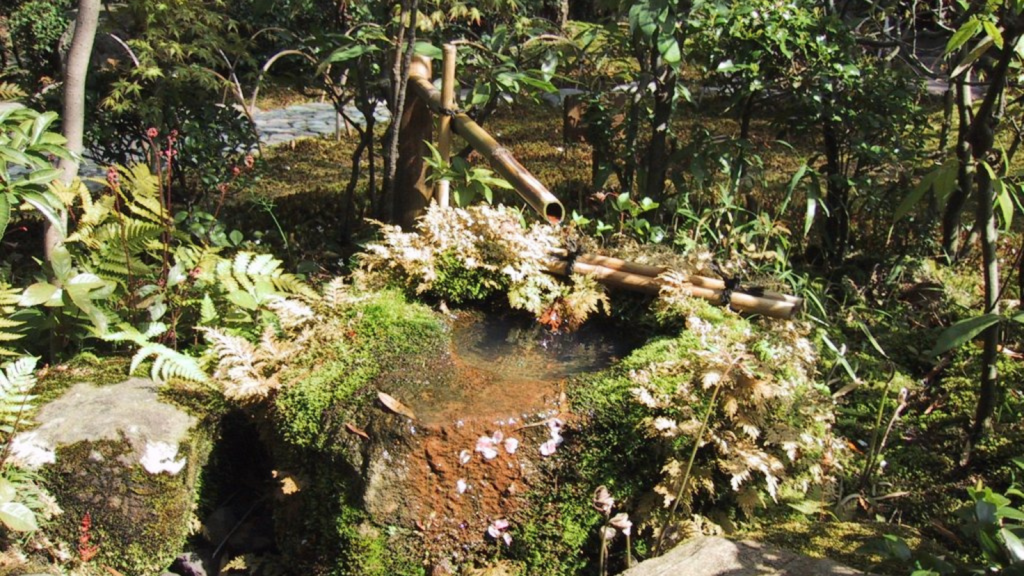
Many Japanese gardens have small, hidden water basins, called tsukubai, placed near teahouses. These basins are used for ritual hand-washing before a tea ceremony, symbolising purification. Their placement, often among rocks and plants, is meant to blend naturally into the surroundings.
18. Carefully Pruned Pine Trees
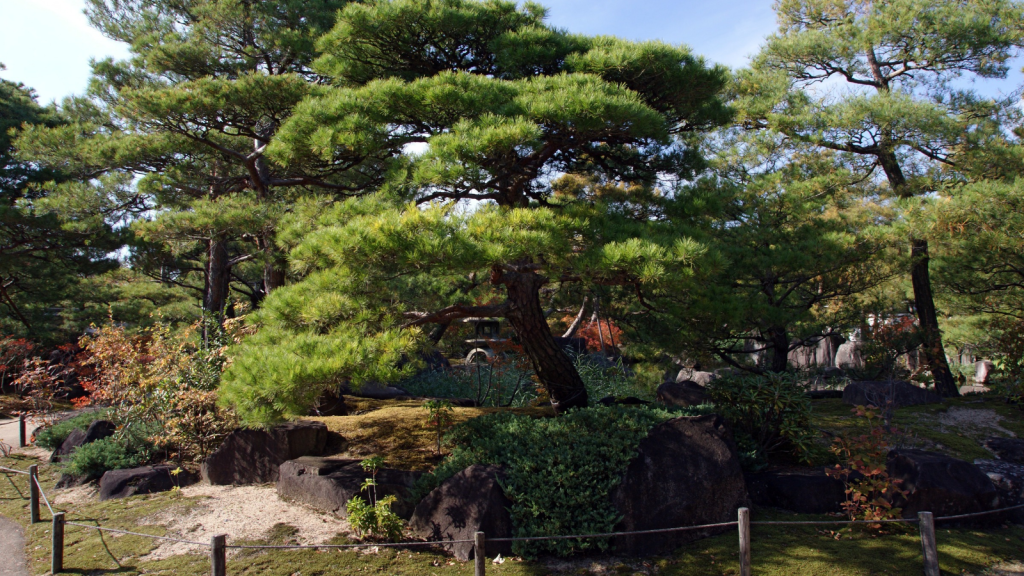
Pine trees in Japanese gardens are often pruned meticulously to reflect the rugged, windswept look of trees found in nature. This technique, called niwaki, is meant to create a sense of age and resilience, adding to the garden’s atmosphere of timelessness and balance.
19. Stone Bridges as Symbols of Passage
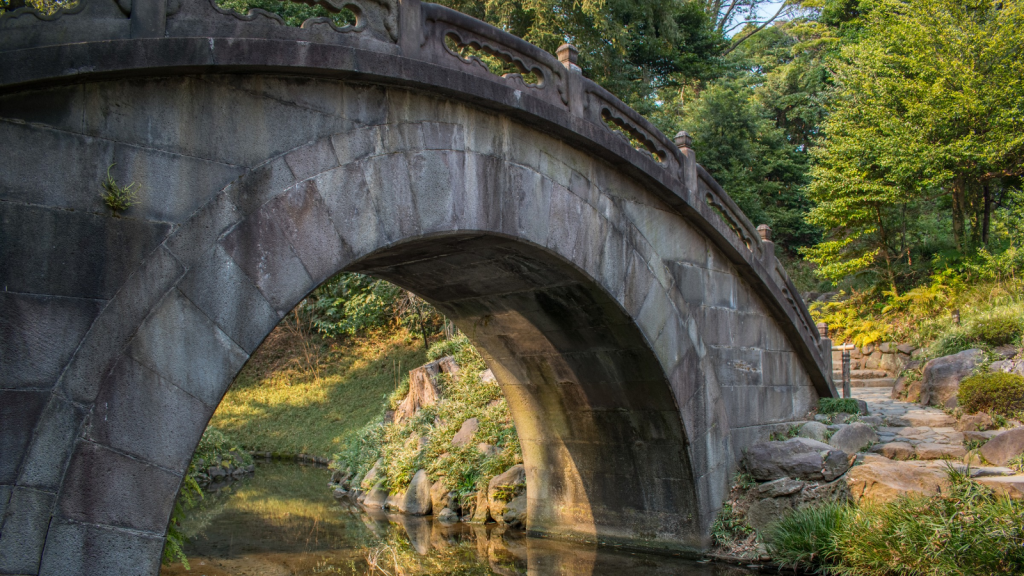
Stone bridges in Japanese gardens aren’t just functional; they’re symbolic. Crossing a bridge represents moving from one state of mind to another, often tied to the idea of spiritual journeys or transitions. These bridges often connect different parts of the garden, encouraging exploration.
20. Small Shrines Hidden Among the Trees
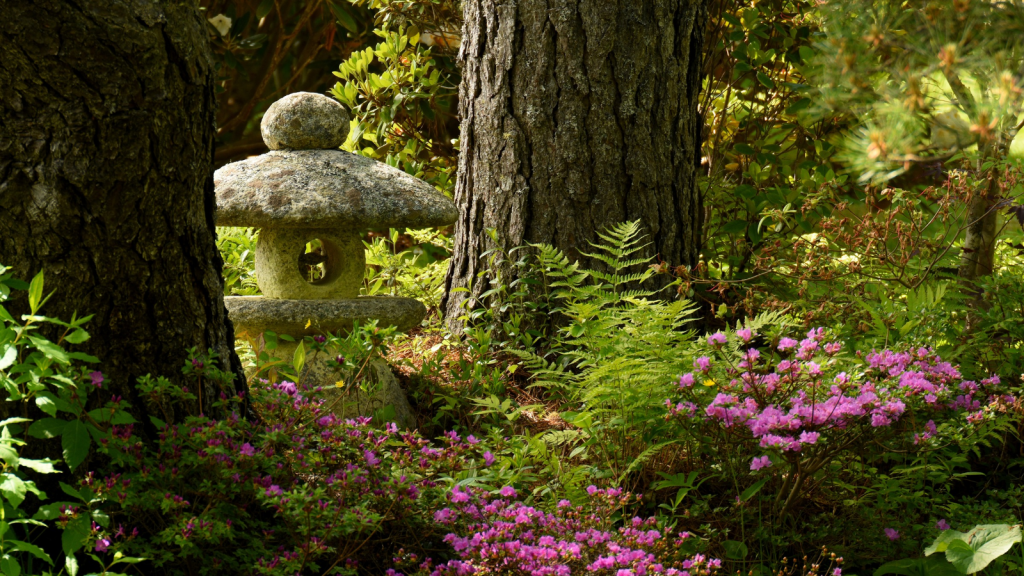
Some Japanese gardens contain small Shinto shrines, hidden away among trees or rocks. These shrines offer a quiet space for reflection and are meant to honour the spirits of nature. They are often simple and unadorned, blending seamlessly into the landscape.
12 Facts About the Adder, Britain’s Only Venomous Snake

The adder, also known as the common viper, is Britain’s only venomous snake. While these fascinating creatures are often feared, they play an important role in the country’s ecosystems. Here are 12 scintillating facts about adders that will help you appreciate these misunderstood reptiles.
Read More: 12 Facts About the Adder, Britain’s Only Venomous Snake
Ellen has been obsessed with logic puzzles, jigsaws, and cryptograms since she was a kid. After learning she was taught how to play chess wrong by a family friend (so they could win), she joined her school chess club and the rest is history.
